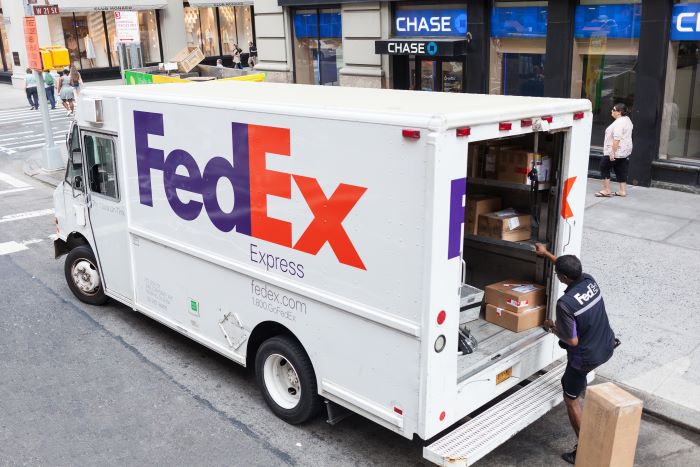JOC.com Cathy Morrow Roberson, Senior Contributor | Dec 08, 2020 2:31PM EST
Retailers will continue to face last-mile capacity constraints beyond the holiday shopping season as consumers take advantage of extended return policies at least through February. Some last-mile carriers are implementing surcharges on those merchandise returns to help manage that capacity.
Shippers have struggled with last-mile capacity constraints while shifting focus from in-store purchases to online orders since the COVID-19 pandemic hit the US in March and resulted in some brick-and-mortar stores temporarily closing and consumers working from home.
Online purchases have jumped and remain elevated through the holiday season. Cyber Monday on Nov. 30 set a record for the largest US online shopping day — $10.8 billion, up 15.1% from a year ago, according to Adobe Analytics, a data analytics firm.
To help reduce shipping costs and lower the impact of capacity shortages, retailers are opting for less-expensive shipping services such as SmartPost, the hybrid last-mile delivery service in which FedEx hands off parcels to the USPS for final delivery. SmartPost has longer delivery times, typically two to seven days.
“Retailers are encouraging customers to use slower options,” according to John Haber, CEO of consulting firm Spend Management Experts.
Talk in the industry suggests that a post-holiday surcharge of 75 cents per package on SmartPost parcels may be announced this week. If true, it will likely help FedEx manage last-mile capacity requirements for anticipated higher return volumes while putting extra cost burdens on their shipper customers.
FedEx, while not specifically confirming a post-holiday surcharge, said in a statement to JOC.com it has implemented several surcharges and fees during the holiday season and continues to monitor shippers’ parcel volume requirements and its last-mile delivery capacity.
“As the impact of COVID-19 continues to generate a surge in residential deliveries, we have entered an unprecedented holiday peak season with extremely high demand for capacity and are experiencing increased operating costs across our network. We anticipate residential volume to continue to surge into the new year,” the carrier said. “For these reasons, FedEx has implemented several surcharges and fees during the holiday period. We are always evaluating our rates to allow us to continue providing our customers with the best possible service during this challenging time.”
Surcharges on returns are being implemented by mailing and last-mile services provider Pitney Bowes. A 4.9 percent general rate increase (GRI) on returns will be implemented on standard domestic returns services through the Pitney Bowes US domestic network effective Jan. 3, according to a Dec. 2 company announcement.
‘Delayed tsunami’ of returns
As e-commerce sales have risen, returns have jumped as well. “Pre-pandemic returns ranged from 8 percent to as high as 40 percent of total online sales depending on the category,” Tony Sciarrotta, executive director of the Reverse Logistics Association (RLA), said in an October JOC Uncharted interview.
While recent figures for returns aren’t available, extended and enhanced return policies enacted by retailers have produced a “delayed tsunami of returns” Sciarrotta said. Indeed, commercial real estate firm CBRE and reverse logistics technology firm Optoro expect online holiday sales to increase 40 percent to $234.9 billion, with up to $70.5 billion of those purchases expected to be returned.
Retailers’ returns policy is a competitive differentiator especially during the holiday season and is important to attract and retain customers, according to CBRE’s latest research report — “Holiday E-commerce Spike Will Lead to Record Returns” — in partnership with Optoro. According to Optoro, 97% of consumers will buy from a retailer again after having a positive returns experience.
Reverse logistics costs for the average return, including customer care, transportation, processing, discount loss, and liquidation loss, can amount to 59 percent of the original sales price of the item.
Many retailers extended their returns policies starting in April. Macy’s returns policy, for example, extended store purchase returns by an additional 90 days. While Walmart temporarily suspended processing store returns and exchanges for restricted items — including food, paper goods, home cleaning supplies, laundry soap, pharmacy, health and beauty, and apparel — in late April, the suspension is being lifted in phases, with the final phase of returns accepted until February 4, 2021.
Holiday returns policies are also being extended this year for similar reasons that retailers extended holiday sales promotions. Retailers will need to ensure that last-mile delivery providers have enough capacity to pick up returns for what is likely to be a period of high volume, given the rise in e-commerce sales.
Retailers will also need additional time to decide whether to resell, refurbish, recycle, or dispose of the returned item. Amazon has extended their holiday returns for most items through January 31, while Nordstrom Rack has extended their returns through Feb. 7.







